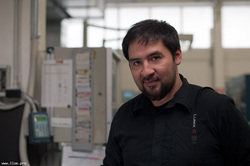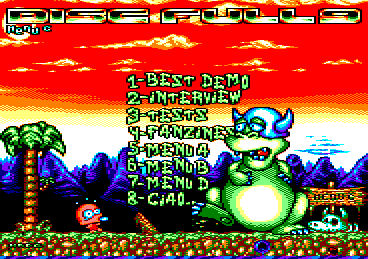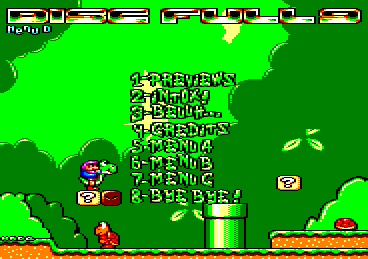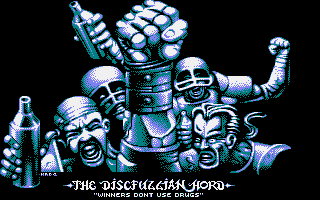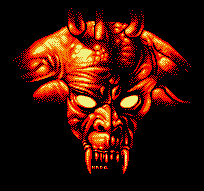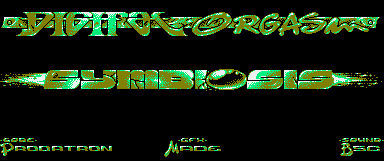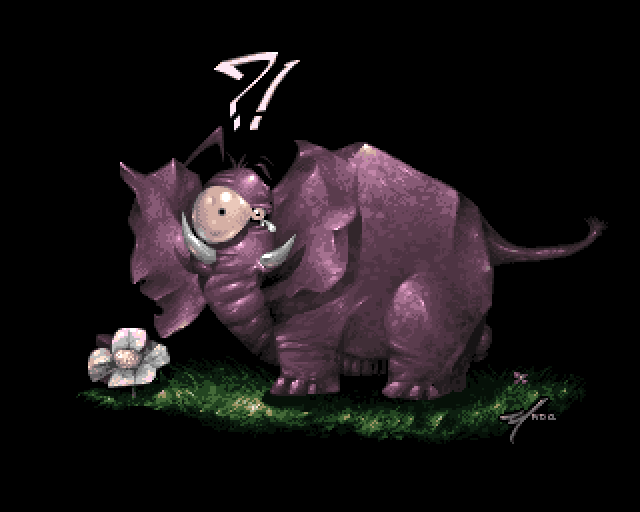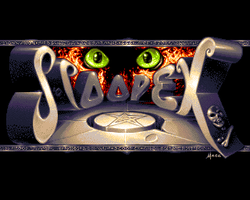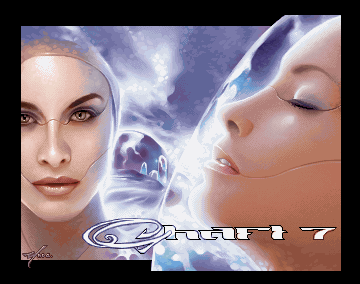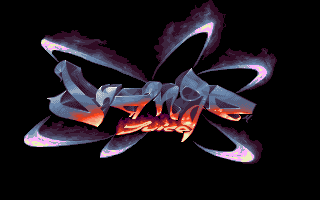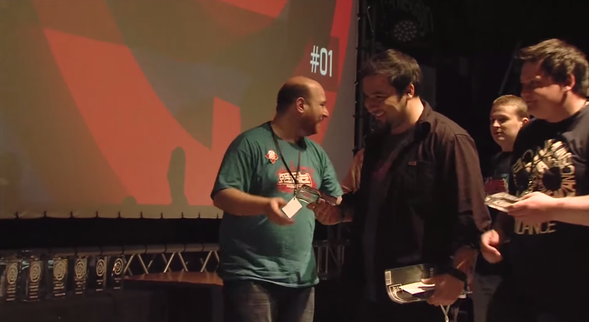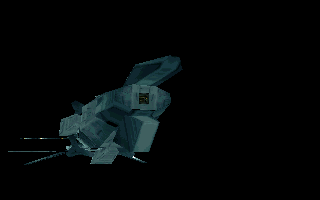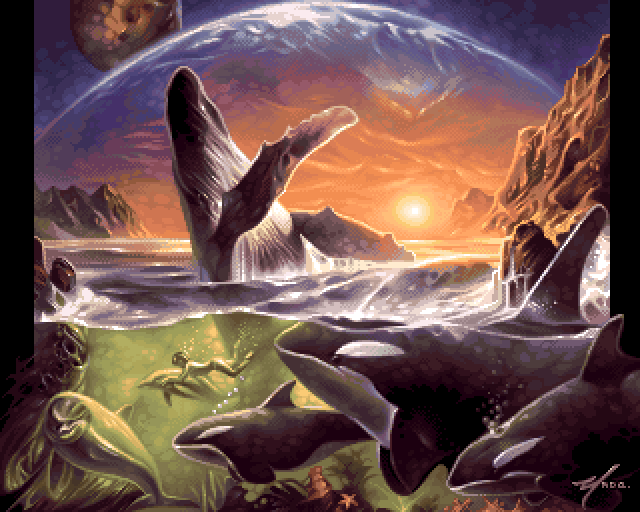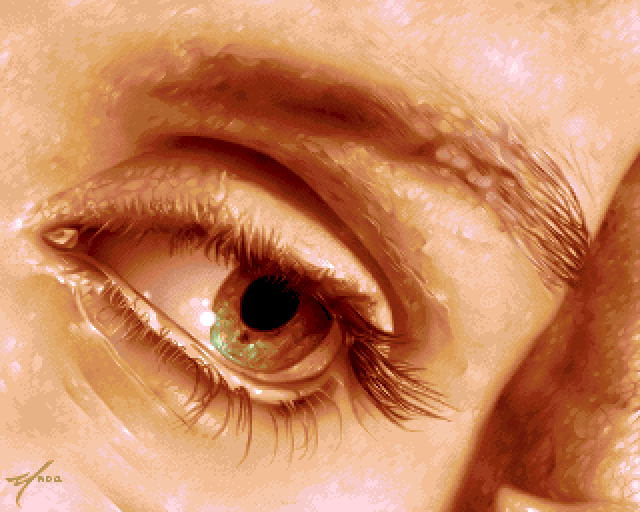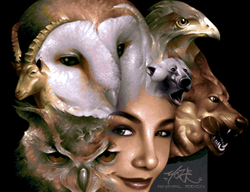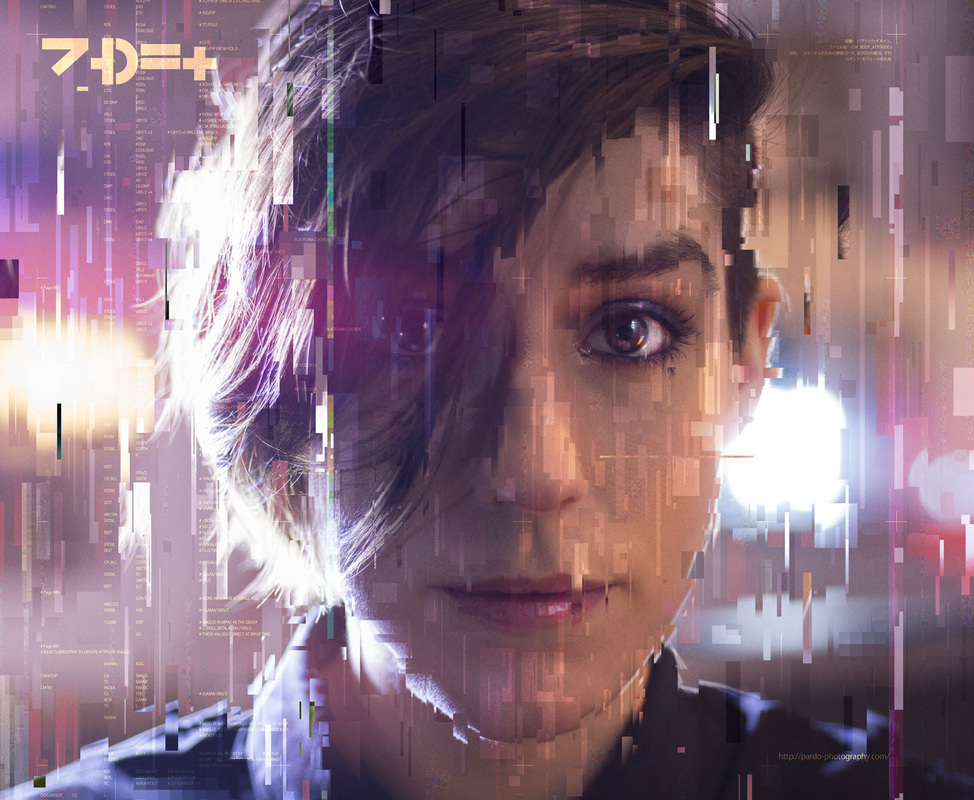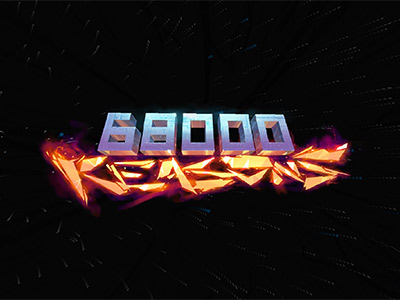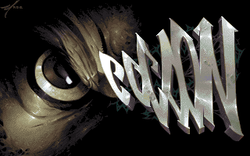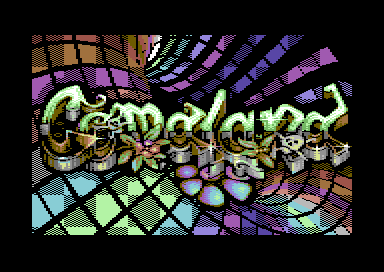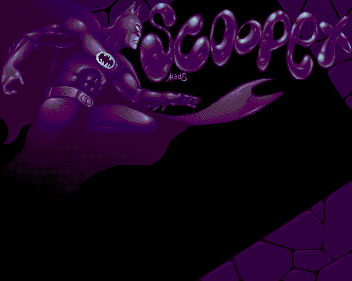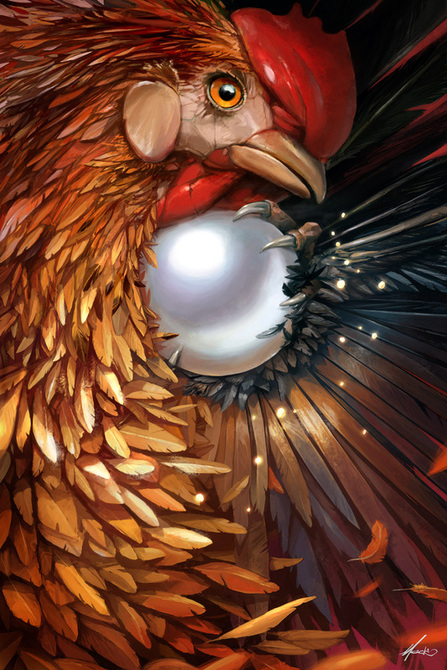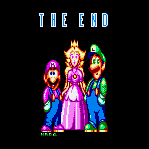Interview of Made / Bomb (December 2014)
|
Carlos Pardo, also known as Made in the demoscene world, is an highly-skilled graphist on modern platform that initially started on Amstrad CPC. I was curious to know more about him, his history, I asked him for an interview and he (kindly) accepted!
But before all - please pick a coffee and enjoy your (long) reading time.... Note: since this interview covers artist artwork, no graphics were resized during the web-layout process. |
1. Hi Carlos! Please can you tell us few elements of your current life? How old are you? What are you doing for a living? Did you participate to some commercial games in your professional carreer? Etc.
|
Hello ! I'm 37 (1977) and currently a freelance Art director based in Paris. I have the privilege to work for the game / web / press industries for more than 15 years. I worked on games on HP48, Gameboy, Psx, Amiga, PC and other exotic platforms, a lot of material was unreleased, a tradition in the game industry. You can check my works on Coldfear (Darkworks), Zombinies (Mattel), Dinocards (Motion Twins), Wakfu TCG (Ankama), Crasher (Mindscape), Single Peak (Micro Folies), Fears (Manyk), etc...
Nowadays I work mainly on web projects, book designs, interfaces, logotypes and illustrations. I do aswell a lot of photography on side projects. |
2. Was the Amstrad CPC the first computer you ever used? What did you do first with your CPC, and how you ended using it for making graphics?
|
Indeed, the CPC 6128 was my first computer. All started in 1988, my best friend and neighbor just had a brand new Amstrad 464. The home computing was just starting to go mainstream in France, and Amstrad was hot ! The same year we visited the Amstrad Expo, a huge event with all the new hardware and software, I was just 11, and my mind was blown.
Everything was so different of what I was used to see, hear and touch, I was so impressed I felt like everything was possible with such tools... I never stoped talking about what I experienced there to my parents, my family was modest and the computers were expensive, but my father, a former engineer saw the future in those machines. A few months later, on christmas, I was the happiest child on the planet. |
|
I started typing printed game code that was given with the computer, and later with specialised magazines (Amstrad 100%). That's how I started learning Basic and Z80 assemby language, I was hooked for good.
|
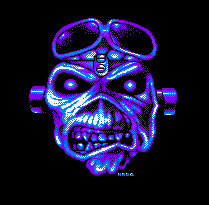
I was a calm and focused kid, son of Chilean imigrants, I was doodeling all the time, taking pictures with a small toy camera, I was surrounded by pictures, photos, paintings. My parents were interested in art and were always willing to help me understand the world around, so this was not a surprise when I started programming my own painting program that used only 5 keys, arrows and space bar to ink. Months were passing and I was improving, always exchanging tips and disks with my neighbor, improving our code together. This passion was an obscession, games arrived, better painting programs too (OCP Art Studio), it was a very inspiring moment of my life. Other kids had computers at school so we quickly decided to talk about what we were doing, and we started a digital fanzine called Disk Full, we skipped paper version because it was too expensive and not interesting to code. We were coding this project together with my neighbor, I added some graphics here and there, I was splitting my computing time in half to do both. I loved doing logos at this point.
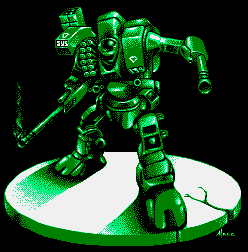
We saw our first demos, the main swapping of game and demos was at school, from hand to hand, copied at home. Demos were another step, I was so impressed by the graphics, the quality of the code, new limits were crossed and there were no visible boundaries. So we worked harder. At one point we were meeting other kids, from other schools, talking about demoparties, copy parties, official events... BBS and internet were far from common, but we were still connected to the world, the only difference was the response time, all was being done by hand, and via postal service. I started winning my first prices for graphic competitions published in magazines, improving my code, life was good, but I had no time to improve both passions, so we did the logic choice for the fanzine, I'll do more graphics and less code, we badly needed visuals and I was the only graphician around.
|
Disk Full was getting public attention, magazines were doing reviews about us, we received a ton of postal mail. Other young programmers joined our team, people seemed to like my style and ideas, that's how I switched full time to a pixel artist and stoped coding for a while.
|
3. What was your first contact with the demoscene? Who contacted you first? Do you remember the first demo (cracktro??) that impressed you? Why?
First contact with demoscene were french guys, I don't remember all the names, but there was Roudoudou, Eliot, Ramlaid, Arrakis, TwoMag, and many other cool dudes. CPC Demoparties were small but inspiring, I always came back home the head full of new ideas and people to recontact. First very impressive productions I saw on CPC where TB Crackers intros and Logon productions, The Demo, to be precise, was something like five years ahead of anyone, from any point of view (code / graphics / music-transfert).
When I am impressed, I feel good about it, often inspired and sometimes urged to improve. This kind of moments are always the occasion to remember to work harder, progress and be humble.
When I am impressed, I feel good about it, often inspired and sometimes urged to improve. This kind of moments are always the occasion to remember to work harder, progress and be humble.
4. What tools did you use to create your graphics on CPC? Later, you used Deluxe Paint (Amiga, PC) then Photoshop (PC). Let's say if you were back in 1990, what would you expect for a better painting experience on CPC?On CPC I only used OCP Art Studio and the keyboard, I learned to draw very fast with a keyboard. I occasionaly tested a CPC mouse and kind of stylus, but that was not the time yet for this kind of hardware. OCP was straight forward, simple and stable, I could do anything with it, and I think I did. In 1990, I don't see anything better than the OCP / Keyboard combo.
|
5. As a graphician, where did you get (in your CPC activities) your inspiration? Did you convert/rip your graphics from other machines (Amiga) ? Some of your graphics were really impressive.. did you really create them from scratch? What is the bitmap you are the most proud of and why?
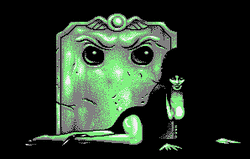
Inspiration was everywhere, at the begining the only source was games, and not long after came the demoscene, with a wider range of creative needs, sources, challenges... A lot of my works was created from scratch, all the logos were originals, and from time to time I converted some nes / snes / amiga / atari stuff I loved.
To fully understand the context, 90' were school years for me, learning everything from scratch, by myself, improving by experimenting a lot and sometimes creating new technics. All graphicians at the time were pioneers, and every weeks we saw new stuff, new styles, technics... Those were crazy years.
To fully understand the context, 90' were school years for me, learning everything from scratch, by myself, improving by experimenting a lot and sometimes creating new technics. All graphicians at the time were pioneers, and every weeks we saw new stuff, new styles, technics... Those were crazy years.
|
I can't really say what I'm the most proud, I don't look back very often... Maybe DiskFull 9 + 10 and Symbiosis works were my "sharpest" productions. At this time I was already on the Amiga and Atari scene, pixeling with better tools and importing back on CPC new technics inspired by those new platforms and productions.
|
6. To you, what makes a bitmap... an interesting bitmap? Back in the time (CPC Pixel Art), and nowadays (PC Pixel Art)? What are the values/technics you are sensible to?
|
Good question ! But before let's be clear on what is different between old computers and our actual computers. Back then we had very, very limited resources, blocked palettes, exotic graphic modes, primitive graphic programs and nasty screens, and each computers had a different mix of those variables. Today all is done with a generic 24bit environment and advanced programs.
What made an interesting bitmap before was the ability to do a rather artistic image under high constrains and sprinkle it with creative ditherings. That still works today on new CPC, C64, Atari and Amiga images. What I look first is of course the overall artistic punch but the quality of the dithering aswell. I often say that you can "feel" the (artistic) intelligence and cleverness of some artists just looking at their dithering and color choices, how they bypass and even play masterfuly with limitations. All of this is possible thanks to those limitations that tease our imagination and make the best of people who like challenges. |
What makes an interesting bitmap today is mainly judged by the creativity skills, not really the technic. Pixel artists without limitations don't take the same paths so they don't think and process the same. That's not better or worst, that's just very different. I see a small zone where playful pixel artists explore new worlds taking back limitations, limited palettes, imported or merged styles... That's where I can better enjoy the interest of a bitmap image created under virtually no limitations.
7. I think most of your creative time towards the CPC was when you were member of Rebels. When and how did you join this team? Who were the members? How did it end?
Rebels was the demomaking side of DiskFull, it was a small team of friends, composed of Beast, PacMan, Scan, Turtle, and other guests. It ended with DiskFull #10, we each followed our path, it was time to go at university, I was heavily involved on Amiga with HMD and SCOOPEX, demopartying all around Europe.
8. Then Rebels collapsed and you joined Symbiosis team. Could you tell us more about this time? How did it end?Symbiosis was a quick project, came a bit too late I think. A dream team, super projects but not much availablity and the golden years of the CPC scene were past us. I signed my last real CPC graphics for Symbiosis. Other appearances since then were drawn on Amiga or PC and transfered to CPC.
|
9. When you left CPC, tons of people started to rip your graphics. Actually, there was a trend to rip your graphics, pick randomly a music from BSC or Kangaroo and then create a demo with it. Were you aware about that process? What was your reaction back in the time? Now?I did not know, I was really away from the CPC scene after the Symbiosis project. That was the exact moment were lots of people of my generation started to switch to other platforms (Amiga / PC) or leave the demoscene to work and have a familly of their own. I guess that is a clear sign of the lack of sceners if people start to create new things with old assets. Absolutely no hard feelings.
|
10. Then you left CPC to follow your pursuit on Amiga platform. Could you tell us more about that time? Was it hard to you to convert yourself to the "real" demoscene thing? What was the first "successful" production you were involved back in those days?
Not hard at all, scenes are all connected in a way or another, I started with the CPC, quickly had Atari sceners around me, and later Amiga folks, console hacker / crackers, etc... The demoscene is a jungle, and the inhabitants are sometimes in many tribes !
|
I am very curious in nature, I was always looking what was going on other scenes, I really loved the Atari vibes (LostBoys, The Carebears...), but finished hanging around with HMD on my first Amiga days. A neighbor was a swapper for them, they needed more graphicians for their TCP Packs, I was ready for action. The conversion was smooth, I started pixeling on Amiga on my neighbor computer, the machine and DeluxePaint were both a revolution to me. I did a lot of Amiga logos and images before feeling at ease with DeluxePaint and a Mouse. I mainly designed for HMD at first, then I met the Scoopex guys at The Party in Denmark. There I did my first successful productions, maybe the Alien demo. The Amiga scene was a totally different way of working and sharing : first, the groups were internationals, compared to the CPC scene that was mostly local with some french demoparties. I was swapping disk everydays by mail, and soon via Bulletin Boards (BBS / modem, ancester of Internet). In those years my contact list was expanding at an alarming rate. I was not a big sleeper, I was at school on day, sometimes pixeling on paper grids, waiting to do my pixeling at night.
|
11. Then you left Amiga to PC platform. Ah... 1996. Could you tell us more about that time?That was a strange transition, I deeply loved the Amiga OS, DeluxePaint... but interesting things were being prepared on PC by french demo groups. I did not like much the PC environment (MS DOS / Win 95), that's why the transition between Amiga and PC was long, I pixeled a long time on Amiga for the PC. The machine was slower, but the tools were more advanced, the OS more stable, and the production were still amazing and inspiring. 1996 was the time I met with Melon, Complex, Oxygene and of course Bomb, that was freshly founded by the very talented Gengis, Hof, Titan, Clawz. They invited me to be part of the team, we all lived around Paris at the time, that was ideal to work together.
|
12. You wrote articles for PC Fun (now dead French paper magazine). Could you tell us more about that experience?
At this time I was winning a lot of prices on demoparties and magazines graphic contests, that's how I met with guys of Amstrad 100% and long after the same guys worked for PC FUN. This magazine was very PC hardware oriented but still they asked me if i was interested in writing reports of the demo parties where I was going, I was of course thrilled to write about that underground movement that was called the demoscene. So I did those monthly 2 or 4 pages reports for a while.
13. Hello, it's 1999 again: IRC was part of the "Internet revolution" back in the days. Do you have good memories about it? Was it the only way to contact you then?
|
Internet, IRC, was the beginning of a new era. Before that we used pen, paper and regular mail (we used to call that "Snail Mail" and put a thin layer of glue on our stamps to reuse them...), right after came a french way of communication called the Minitel, that was a joke, but quicker than postal service to message. Then the serious things came, BBS / Bulletin Boards, the first digital file transferts for me, a few hours for a few megas...ho god, we were so patient.
And then came internet, IRC, and all the fast file transferts (compared to BBS). Very good memories, new fundations for the demoscene and the way we communicated, shared and worked together. That was a blast. Once again, everything was to be done, designed and thinked, a very exciting perspective for a young creative. A lot of people joined me via postal letters back then, Internet was the moment where I could be joined by mail and irc, I coded my bot to be available online 24/7 on #demofr. The postal years were gone. |
14. Your productions ended first several times on PC parties. To be honest with you, I was very proud and happy for you. What did you learn from that experience? I'm sure respecting demoscene deadlines had an impact later on you when working as a member of the game industry, right?The impact was huge, and fundamental. I learned to work and think fast. To design under high technical constraints, to be always informed on what is going on. I learned to look for progress, not only for success. Everywhere I would go, I met talented and incredibly skilled people, older and technically stronger than me. That was very inspiring, I forged my artistic self in that kind of environment. That was indeed useful later when I worked for the game industry, the same happened again, sure I was respected, but had a lot to learn, to do and to think.
|
15. Still on your PC period - 3D was all the thing back in 1998. You tried to make some 3D art (Explora, Eden demos..) but you finally remained a 2D artist. Why? As an artist, do you think 2D is a better way to express yourself? What were the limitations of 3D?
|
Yes, I was interested in 3D, the tools were not very streamlined but still I started with POV RAY and 3D Studio 4. The demos were using more and more 3D, demogroups trends were on making the best realtime software 3D engine, and I didn't escape that ! I did quite a lot of low polygon modeling and texturing, camera scriptings and so on. That was definitively not the best way to express myself, the modeling and texturing was very limited, I mean, VERY limited, because of the memory, the processor power... I loved challenges, but realtime 3D was not yet ready to be super impressive. I continued to do small 3D tasks for demos, but never felt the need to do more or step into the animator shoes.
That is a totaly different universe, I prefer to focus on illustration and graphic design and improve that. |
16. Finally... CPC scene, Amiga scene, PC scene... pfew! You basically had experiences with all major scenes to go, at their peak time. What was your best experiences ? (people, party). Do you have memories to share?CPC is and will always be my roots, but when I was a kid, I enjoyed more intensely the Amiga days. My best memories are on demoparties of course, and it would take me quite a time to share all those memories.
My best souvenirs are those with people I could bond with, I have excellent souvenirs with the german Scoopex crew, with the Swedish and Finnish groups Hirmu, TPolm and Orange. We did know how to work and party hard back then ! One of my absolute favorite moment was when we crashed The Party 7 electricity power, the massive and chaotic sound of the party was off, the only computer alive in the middle of this huge place was a single laptop (rare and expensive at the moment) running a porn movie that was the only thing the thousand people of the party could see and ear. We went out during the black out, and the little city of Aars was gone in darkness aswell. |
17. There was a "No Copy" label back in the days (Amiga/PC), which consisted creating graphics from scratch. Can you describe more that "No Copy" label? Does it still remain a valid value today? Back in the days - did you first draw your graphics on paper, then scan it, then paint on top of it? Is it still valid nowadays?
|
The NoCopy movement was born with Amiga, more and more people had access to digitized or scanned material, and some folks only used that kind of sources to design images. That was boring when no skills were involved, and lots of Amiga graphicians had the skills to pixel stuff but not to draw realistic images. The pressure to do better and faster was strong and the copied material was more and more present.
The fact that almost all the demoscene was composed of kids and teenagers helped a lot in that way. Those young creatives where experimenting, progressing, changing, improving, everydays, everytimes, sometimes copying or working on top of existing material is part of the learning process. I learned like that in school, art school and in the demoscene, it's not exclusive, but part of the way you aquire some technics. On my point of view the NoCopy label stands for commercial projects designed by experienced artists. I totally agree that fresh material is always better, but not everybody is capable of that on every occasion. |
18. Still on the "No Copy" way of thinking - there was a time where people used DeluxePaint (pure pixel art) versus Photoshop. Conflicts happened when wonderful Photoshop plugin-effects where applied onto 2D images. Your thoughts about that? Should "pixel art" be considered as 100% hand-drawn, or do you accept "pixel art" using Photoshop plugins?Pixel art is by essence pixeled, pixel by pixel, color by color. Plugins are automatised processes that you don't fully control, they work well as a whole, for large surfaces or zones. I really prefer to think that pixel art is simply a bunch of pixels put here by hand with a sharp and precise style and with a total control of the pixels. No room for plugins.
|
19. After all those years..... is there still some technics you use on a regular basis that you initially learnt based on your CPC experience?
|
Hard to explain but yes. On CPC we only had oldschool CRT screens, they were small, blurry and color leaked a bit on the horizontal plane. For those reasons graphicians quickly adapted and used special ditherings to create "new" colors that were 2 known colors, blurred by the screen, that gave a new one. That was bold and effective, I did a lot of experience in that way, mixing absolutely awful colors together to have interesting new ones. I still do that on nowaday pictures, it's not very usefull with today screens but still gives a unique and vibrant touch to reflect and enlight in some cases. Some artists use fake chromatic aberations too, to give a more unique style to their images.
Another thing I still do, that's not a real technic, but I used to conseal messages in my images using twice the same color on a surface, if you change one of those 2 colors in the 8 bit palette, you could unravel my message... Sometimes I engraved very small signs on my pictures, to people I loved and greeted, I still do that. Nowadays I do that on a more advanced and playful way, I designed my own crypto font and started using it on my works since January 2014. Samples available here : http://m4de.com/collections/AION_CipherType#1 This project is the begining of something I'll share with a limited number of artists that hide messages on their artworks. If all goes according to the plan, the cypher font will be released in a few decades, and then, a huge treasure hunt could start. |
20. You are still doing some demos from times to times (this year: 68000 Reasons etc). Can you quickly tell us your current activities towards the "modern" demoscene? What do you think of current art direction in oldschool platforms?I'm working on new projects for both old and new platforms.
68000 Reasons (with The Deadliners) was a one shot that finally opened my eyes on something that was already here: the web demos, powered by WebGL, HTML5, JS, CSS3, etc... The possibilities are endless and thanks to this demo I am working on something new with the same team. The Deadliners homepage is here. Other things are in progress for both the CPC and PC, but that's too early to tell ;) |
21. Honestly. Really. Do you miss the good old days of 1995? Or, the opposite - do you think we are living a fantastic period today through all those modern "demoscene" productions?Both, of course I miss the good old days, the pioneer moments, all was new and unique, but I have to admit that the present and the future are super exciting as well. It's less cosy, a bit complex, there is more noise to the signal, but new experiences make me feel alive and keep my heartbeat going on.
|
22. As a long-time user of Pouet.net, I personally think there is an obvious shift of the whole demoscene to retro-platforms. Do you share same point of view? If yes, do you think the future of demoscene should be in past machines? If no - will the future be 64Kb intros on PC?
Yup, there is a shift, and it never ceased. The more we do, the more we archive, the more we are, the more options we have.
The retro is back because our generation is back from 1st jobs / familly funding, I think a lot of people feel the need to be back to their roots past 30 / 40, we have more experience and means, bold concepts, that's the perfect ground to come back and create new things, tell new stories. The future is not past machines, but past machines will always be there, at our side, for the most playful and curious ones. With very powerful machines, I always though that the future was in creating new challenges. 4Kb / 8Kb / 64Kb are the perfect start for that, procedural images, maybe VR inputs in the next few years, maybe via the cloud, can't wait to experience that.
The retro is back because our generation is back from 1st jobs / familly funding, I think a lot of people feel the need to be back to their roots past 30 / 40, we have more experience and means, bold concepts, that's the perfect ground to come back and create new things, tell new stories. The future is not past machines, but past machines will always be there, at our side, for the most playful and curious ones. With very powerful machines, I always though that the future was in creating new challenges. 4Kb / 8Kb / 64Kb are the perfect start for that, procedural images, maybe VR inputs in the next few years, maybe via the cloud, can't wait to experience that.
23. Please, can you name 1 production - yes, just one - that impressed you lately? Whatever the platform. Why specifically that one?One is cruel ;) I'll say Cncd & Fairlight - The ink test. Short and impressive production by a legendary group, gives me a taste and idea of what tomorrow could be.
Two is better ! Graphic, Music, Code, all is ultra clean for a 2014 production on such an old computer: Censor Design & Oxyron - Comaland (C64) |
24. From times to times, do you still follow/watch CPC scene activity? Do you like the way it evolve? (both tecnically and aesthetically). What productions amazed you lately?I follow the CPC scene from time to time, I'm still impressed by what they do, Batman Forever was a good reminder that this machine still has potential.
|
25. You visited the city of Tchernobyl and made a book about it. Could you tell us more about this (surprising !) work ?
It was an impossible project until I met a scener who worked in the french Nuclear industry, it was back in 2009.
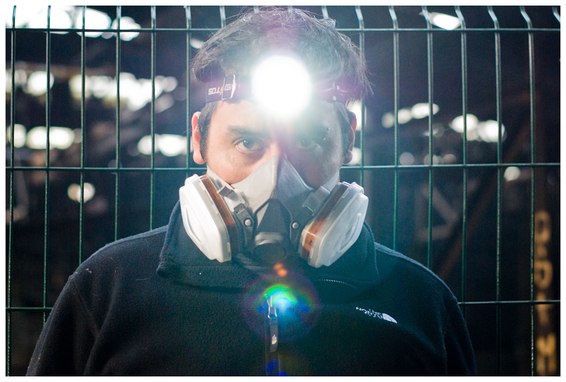
My wife and I were heavily involved in photography, it was our creative sandbox, our favorite subjects were urban exploration, historic landmarks and portrait. As our friend informed us that the exclusion zone of Tchernobyl was less contaminated and accessible with a special access delivered by the Czech governement, we decided to go there and make a photographic statement. 25 years passed, the abandonned 30km radius was guarded by the millitary, every 10km we had a checkpoint to pass... The most impressive part of the journey was Prypiat, the ghost city where Tchernobyl scientifics and their familly lived at the time. Back then, this kind of ultra modern cities powered by the nuclear technology was called "Peaceful Atom", as I was walking through the lost debris of this forgotten city, I thought it was a sadly ironic nickname... A trace of the human confidence, arrogance. I was amazed to see how nature came back, how trees were regaining their rightful position, sometimes in the middle of buildings, everything was so quiet...too quiet. No birds, no insects, the only noise was our breath, the sound-click of cameras and the geiger counters. From times to times they alerted us of contaminated hotspot, we found many, we dodged them all.
As we came back from this god's forgotten place, the head full of those out of this world images, we couldn't find a lot of recent documentation about Tchernobyl, that's when we decided to publish our photographic work in a book.
You can browse complete photo collection here. Book teaser is here at Vimeo. Book is available for purchase at Amazon (US) or Amazon (France).
As we came back from this god's forgotten place, the head full of those out of this world images, we couldn't find a lot of recent documentation about Tchernobyl, that's when we decided to publish our photographic work in a book.
You can browse complete photo collection here. Book teaser is here at Vimeo. Book is available for purchase at Amazon (US) or Amazon (France).
26. I guess you are an artist that always considers new options to grow up both aesthetically and technically. In your modern work these recent years, where do you find your inspiration ? Did you/do you travel a lot? What places amaze you?
|
I find inspiration in all the images, situations and people that captivate my attention, I'm always doodling stuff, taking notes, photo references, saving thousands of ideas and inspirating artworks on my cloud drive, having those glipses concepts at the reach of my hands anywhere I go. For year friends asked me for references, ideas, I always tried to help, share and connect people, that's part of the CFSL / Café Salé project, a french community I co-founded in 2002 and that is still kicking and alive. Another inspiration sharing project, more personal and recent was 1977g, a virtual gallery, refreshed everyday of the year, with most of my influences and inspirations of the moment. This place is my moodboard, the most personal thing I share with the public. It had been going on for more than 2 years now.
I can't talk about inspiration without talking about photography, it changed my point of view, my way of framing, composing, and yet I managed to help my photography with illustrator tricks, in the way I enlight a scene, use a model, take colors, etc... I travel as much as I can, that's the best way for me to keep sharp and alert. Other cultures are piece of a huge puzzle, the human puzzle, each piece kind of influences me and then my artwork. I feel changed and energized each time I come back home. The place that amazed me the most was Gunkanjima in Japan, a small abandonned island in the south of Japan. Served as a coal mine for almost a hundred of years, abandonned in 1974 as we changed our energy power sources. Work in this place was hard, a lot of people lived and died there, they used Korean and Chinese slaves, some kids were born in that rock. They had shopping centers, schools, hairdresser, opera, swimming pools, spas... Gunkanjima haunts me, I explored it three times, it's dangerous and I still want to go back. You can browse corresponding photo collection here. On a more positive note, Iceland is another place that amazed me, there I experienced the most outstanding landscapes, the most liveful and wide place I ever visited. You can browse corresponding photo collection here. |
27. The interview is now over. One last word before leaving us?
I realised a few years ago that the demoscene was more than a fringe phenomenon. Seeing the new generation, coding, drawing and playing music with as much passion as we did filled me with joy. The war of exotic computers and platforms is over, the distance between people is thinner than ever, the tools are incredibly powerful and accessible, all of this means that there is plenty of room to focus on creating and sharing. That's what I will always love to do, so thank you for this amazing occasion !
|
Finally, some useful links to point Carlos's work: 2D works, photography, community, 1977g.
Thanks Carlos for your time! I'm so sorry for all those questions, I was super-verbose here. It was really interesting to read all your answers. As member of the CPC community, and partially PC scene too - let me officially thank you for all the great job you did through the years. Not only for your graphics, but also the values you shared towards the demoscene - "Leo" 2D paint on PC has been my favorite wallpaper for a long time. Thank you so much Carlos, all the best for the future. |


